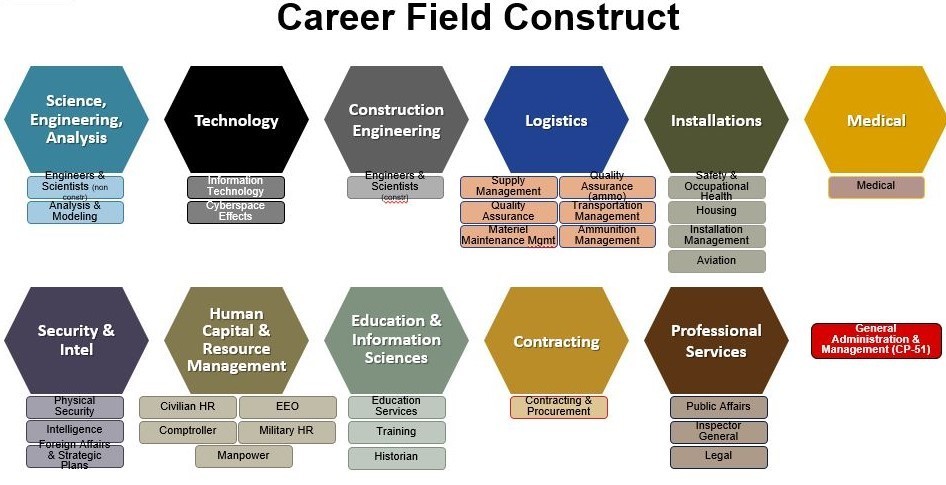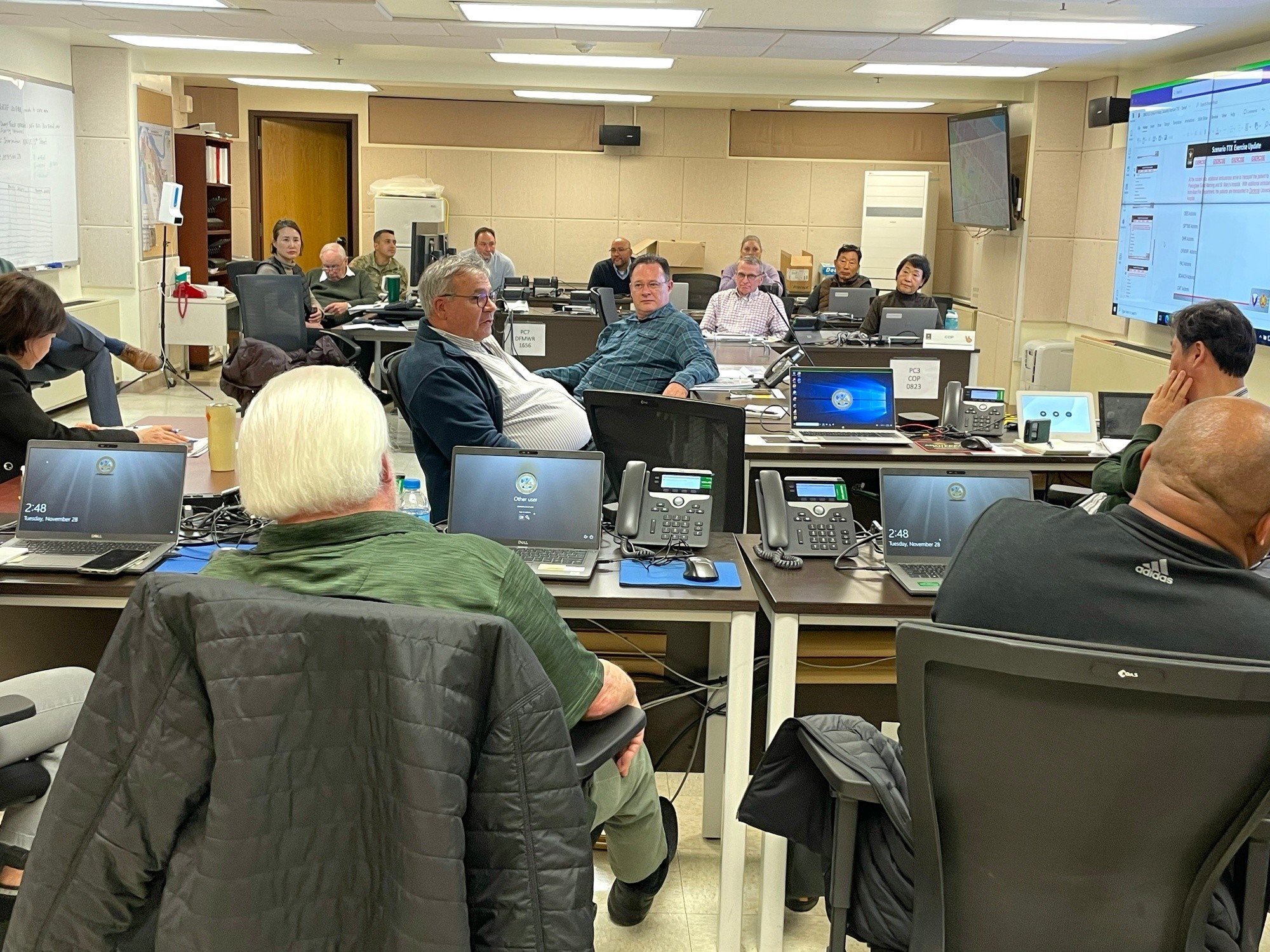
In the job market today, being able to adapt and grow is super important. That's where cross-skilling comes in. It's a way for employees to pick up new skills and for companies to build a more flexible team. Did you know that companies with cross-skilled workers are 30% more likely to do better than their rivals? It's true! By encouraging ongoing learning and skill variety, businesses can boost productivity and keep employees happy and around longer. In this article, we'll look into cross-skilling, why it matters, the many benefits for both companies and staff, and how to set up cross-skilling programs. We'll also share real-life examples and answer common questions to show you how cross-skilling can make your workplace more adaptable and innovative.
Summary: This article explores the concept of cross-skilling, highlighting its benefits for both organizations and employees, and provides guidance on implementing cross-skilling programs. It also includes real-world examples and answers frequently asked questions about cross-skilling.
Understanding Cross-Skilling and Its Importance
Definition and Scope of Cross-Skilling
Cross-skilling, also known as cross-training, involves teaching employees to manage tasks beyond their usual job responsibilities. This approach enables them to acquire skills from various business areas, enhancing the company's adaptability and resilience. Imagine a marketing specialist learning data analysis or a software developer delving into user experience design. These employees are expanding their skill sets beyond their traditional roles.
In today's rapidly evolving technological landscape, cross-skilling is vital. It helps employees stay abreast of new technologies and remain pertinent in a constantly shifting digital world. This practice not only makes employees more versatile but also prepares them for diverse roles, transforming them into valuable team players. Source
Importance of Cross-Skilling in the Modern Workforce
Cross-skilling is crucial in our dynamic job market. It enables employees to adapt, allowing companies to better navigate changes in work processes, technology, or staffing needs. By reducing dependency on a single individual for critical tasks, cross-skilling ensures continuity in operations even if someone is absent or leaves the company.

Employees who undergo cross-skilling often experience increased job satisfaction and engagement, as they enjoy variety and growth opportunities in their roles. This practice is closely related to upskilling and reskilling, keeping employees relevant amidst automation and digital transformations. For employers, cross-skilling results in a more adaptable team, improved collaboration, and enhanced productivity. In industries with high turnover, it maintains operational stability and mitigates the impact of employee departures. Source
From a company's perspective, cross-skilling enhances efficiency. Teams with diverse skills can tackle projects more comprehensively, reducing the need for external hires and streamlining operations. It fosters innovation by enabling employees to contribute fresh ideas from various domains, providing companies with a competitive advantage, particularly in sectors like technology and healthcare. By investing in cross-skilling, companies not only prepare their workforce for the future but also empower employees to realize their full potential. Source
Key Benefits of Cross-Skilling for Organizations
Boosting Operational Flexibility with Cross-Skilling
Cross-skilling helps businesses remain resilient when employees are absent, leave, or when workloads increase. By training staff to handle more than just their primary responsibilities, companies ensure that essential tasks continue uninterrupted. This flexibility is particularly beneficial in fast-paced sectors like tech and finance. Employees who can shift roles and cover for colleagues help maintain smooth operations. They can manage unexpected challenges, step in for coworkers, and keep processes running seamlessly, thereby enhancing the company's overall robustness (iSpring Solutions, Skills Caravan).
Additionally, cross-skilling fosters a culture of continuous learning and innovation. When employees acquire skills beyond their usual roles, they often introduce fresh ideas and creative solutions. This stimulates innovation and keeps the team engaged and motivated to drive the company's success.
Cross-Skilling for Cost Reduction and Efficiency
Cross-skilling can significantly reduce costs by minimizing the need to hire external or temporary workers during peak periods. This translates into savings on salaries, benefits, and other hiring-related expenses. By training employees to manage diverse roles, companies can streamline operations and prevent bottlenecks that occur when individuals are overwhelmed, thereby enhancing productivity and efficiency (Rippling, iSpring Solutions).

Moreover, cross-skilling facilitates internal role succession planning, which cuts down on recruitment and training expenses. Employees familiar with various functions can identify areas for improvement, implement changes, and maintain momentum even amidst unexpected developments. This capability ensures teams consistently meet deadlines and enhance productivity.
Cross-Skilling for Enhanced Knowledge Retention
Cross-skilling preserves critical knowledge and encourages its dissemination across teams. It reduces the risk of losing expertise when employees depart, as more individuals are well-versed in essential processes. Employees gain a comprehensive understanding of the business, which helps retain expertise internally and fosters a culture of perpetual learning (Docebo, Skills Caravan).
Cross-trained employees are more inclined to document and share best practices, embedding valuable knowledge within the organization. This fortifies workflow stability and ensures key processes remain robust, even in the face of personnel changes.
Enhancing Team Collaboration Through Cross-Skilling
Cross-skilling enhances teamwork by creating an environment where employees with diverse skills collaborate more effectively. It encourages interdepartmental interaction, breaking down silos and leading to improved communication and a unified sense of purpose (Skills Caravan, Docebo).
When employees understand multiple roles, they are more likely to assist each other, share knowledge, and cultivate a positive team atmosphere. This understanding fosters empathy and respect as employees appreciate the challenges and contributions of their peers. Enhanced collaboration can result in cohesive teams that work seamlessly towards shared objectives.
Furthermore, cross-skilling can lead to the formation of cross-functional teams, which are typically more agile and responsive to change. These teams can quickly adjust focus when priorities shift, providing the company with a competitive advantage. By promoting a culture of teamwork and continuous learning, cross-skilling enables companies to fully leverage their workforce's potential, driving success and growth in an evolving business landscape (AIHR).
Advantages of Cross-Skilling for Employees
Enhance Career Development with Cross-Skilling
Cross-skilling is a powerful tool for employees aiming to boost their career development. By acquiring new skills and exploring different roles, employees become more adaptable to the ever-evolving job market. This flexibility facilitates transitions between departments and the undertaking of larger projects, enhancing their value to current employers and appeal to future ones.
Consider a software developer who learns digital marketing; they could transition into product management, combining technical expertise with marketing insights.
Moreover, cross-skilling can uncover hidden talents, paving the way for promotions and leadership opportunities. Employers value employees who are eager to learn and adapt, viewing them as proactive and ambitious. These attributes often lead to promotions and leadership roles, as such employees are seen as capable of driving innovation and managing diverse teams.

Cross-skilling also prepares employees for roles that require a broad skill set, such as project management or consulting, where understanding different facets of a business is essential.
Boost Job Satisfaction and Motivation with Cross-Skilling
Cross-skilling significantly boosts job satisfaction and motivation. As employees acquire new skills, they feel more engaged and appreciated by their company. Employees who perceive their company as investing in their growth tend to experience increased happiness and loyalty, resulting in longer tenures.
This continuous learning breaks the monotony, injecting fresh excitement and interest into their work.
Furthermore, cross-skilling empowers employees with more control over their career trajectories. When they feel equipped to explore new roles or tackle challenges, job satisfaction naturally rises. This empowerment enhances motivation as employees set and pursue personal and professional goals. Experimenting with new roles often brings a sense of achievement and renewed enthusiasm, elevating overall morale.
Improve Adaptability to Change through Cross-Skilling
Adaptability is crucial in today's rapidly changing business landscape. Cross-skilling equips employees to manage disruptions such as staff absences or sudden business shifts, ensuring smooth operations. With an expanded skill set, they can quickly transition between roles, making the workforce more agile and resilient.
For example, an individual skilled in both IT and business analysis can more seamlessly adapt to digital transformation projects, bridging technical and business teams.
Cross-skilling also prepares employees for technological advancements and market fluctuations, reducing the risk of their skills becoming obsolete. Employees capable of stepping into various roles during peak times or emergencies help maintain business continuity and reduce dependency on a single person.
This adaptability benefits both the employee and the organization, fostering a workforce that thrives amid change.
Additionally, cross-skilling enhances problem-solving by enabling professionals to address challenges from multiple perspectives, helping them analyze issues and propose innovative solutions. This ongoing growth prevents burnout, keeping professionals engaged and motivated, leading to greater job satisfaction and fulfillment in their careers.
Implementing Cross-Skilling Programs
Effective Cross-Skilling Strategies
If you're looking to make cross-skilling work in your organization, start with a solid plan that ties into your business goals and what your team can do.
-
Identify Key Roles and Skill Gaps
Pinpoint the key roles and skill gaps you have. This step is crucial because it helps you focus on cross-skilling efforts that will really make a difference in keeping your business running smoothly and boosting productivity. By knowing where the gaps are, you can craft cross-skilling programs that meet your company's specific needs (source).
-
Establish Structured Training Programs
Set up structured training programs that allow employees to step out of their usual roles and pick up new skills, making them more flexible and adaptable. Consider offering a mix of online courses, workshops, and hands-on projects to cover all bases (source). Encourage peer learning and establish mentorships across departments to boost collaboration and make knowledge sharing a regular practice (source). -
Align with Career Paths
Align cross-skilling with employees' career paths. When people see how learning new skills can help their careers, they’re more likely to get involved and stay motivated (source). Regularly check and update your programs to keep them relevant with the latest business needs and tech changes (source).
Overcoming Cross-Skilling Challenges
Starting cross-skilling programs isn't always a walk in the park. One big hurdle is that people might resist change. They might not want to leave their comfort zones or worry that new skills could threaten their current jobs.
-
Communicate Benefits Clearly
To tackle this, make sure to clearly communicate how cross-skilling benefits both them and the company, like opening up career growth and ensuring job security (source). -
Balance and Support in Cross-Skilling
To avoid burnout, balance cross-skilling with employees' main duties and offer plenty of support. This keeps them from feeling overwhelmed and helps keep productivity steady (source). Ensure everyone has fair access to cross-skilling opportunities to avoid any feelings of favoritism or unfairness (source).
-
Allocate Time and Resources for Training
Finally, make sure there's enough time and resources set aside for training. Both management and staff need to commit to making skill development a priority (source).
Technology's Role in Cross-Skilling
Technology plays a significant role in making cross-skilling easier.
-
Digital Learning Platforms for Cross-Skilling
Digital learning platforms and online courses offer flexible and scalable options, letting employees learn at their own pace whenever it suits them (source). -
Utilizing Learning Management Systems (LMS)
LMS are great for tracking progress, certifying skills, and spotting skill gaps in the team (source). -
Collaborative Tools and Simulations for Learning
Tools for collaboration and virtual simulations let employees practice hands-on and get real-time feedback in a safe setting, which enhances learning (source). -
Leveraging Analytics and AI in Training
Analytics and AI can suggest tailored learning paths based on individual strengths, career goals, and organizational needs, making training both relevant and effective (source).
By leveraging these tech tools, organizations can significantly enhance the effectiveness of their cross-skilling programs.
Real-World Applications and Case Studies
Cross-Skilling Success in Various Industries
In the tech industry, Google's success with cross-functional teams highlights how collaboration can drive innovation. By integrating engineers, designers, marketers, and product managers, they've developed hits like Google Maps and Gmail. This success is attributed to their diverse teams and open communication channels.

LEGO also exemplifies the power of teamwork through their LEGO Ideas program. By bringing fans and internal teams together to design new products, they have launched popular items such as the LEGO NASA Apollo Saturn V set.
Zappos takes a different approach with their holacracy model, which eliminates traditional hierarchies to allow teams to self-organize. This has improved both customer service and workplace culture. Meanwhile, IBM focuses on upskilling, aiming to train 30 million people for future jobs by 2030. They collaborate with schools, governments, and NGOs to create new opportunities.
In the automotive sector, Toyota's lean manufacturing approach includes cross-training workers in various roles. This strategy enhances adaptability, service, and productivity while maintaining low turnover rates. In healthcare, cross-training nurses in specialties like pediatric care and emergency response increases flexibility.
Cross-Skilling Strategies for Crisis Management
Cross-skilling is crucial for effective crisis management. It enables organizations to quickly adapt by preparing employees to handle multiple roles, ensuring continued operations even during disruptions. For instance, during the COVID-19 pandemic, Seagate cross-skilled their staff to redeploy them internally, maintaining business continuity without layoffs.

In healthcare, training nurses in diverse areas strengthens crisis response, making the workforce more flexible and prepared. For companies, understanding the necessary skills and the capabilities of their employees is essential for navigating crises seamlessly. This strategic planning keeps operations stable during challenging times.
FAQs About Cross-Skilling
How Can Cross-Skilling Enhance Team Dynamics?
Cross-training can significantly enhance team dynamics by fostering collaboration and empathy among employees. When individuals are trained in various roles, they gain a deeper understanding of their colleagues' responsibilities. This insight reduces misunderstandings and creates a smoother work environment.
Additionally, when team members possess a diverse set of skills, they can collaborate more effectively on different projects, strengthening teamwork. This type of training cultivates a flexible team capable of adapting to changes and maintaining smooth operations.
For instance, consider a customer service team cross-trained in tech support and sales. Such a team can address a wide range of customer issues, improving both teamwork and customer satisfaction. To learn more, visit Cloud Assess.
What Are the Main Challenges of Cross-Skilling Programs?
Launching cross-training programs comes with its own set of challenges. One major hurdle is ensuring that employees have sufficient time and resources to acquire new skills without neglecting their primary responsibilities. This requires careful planning to prevent chaos during training and maintain productivity.

Companies must manage resources wisely to avoid employee burnout or a drop in productivity. Additionally, some employees may resist change or lack motivation, which can hinder the effectiveness of these programs. Concerns about stepping out of comfort zones and struggling with new tasks are common.
To address these issues, companies should clearly communicate the benefits of cross-training and provide ample support. For example, a manufacturing company faced resistance when attempting to cross-train workers on different machines. They overcame this by scheduling training during slower periods and offering incentives. For more insights, check out Easygenerator.
How Does Cross-Skilling Boost Employee Retention?
Cross-training plays a crucial role in employee retention by enhancing job satisfaction and engagement. When employees have the opportunity to learn new skills and explore different roles, they often feel more valued and motivated. This leads to higher morale and reduced turnover.

Feeling a sense of growth can increase employees' job satisfaction, making them less likely to seek opportunities elsewhere. Cross-training also aids in internal hiring and future planning, providing employees with clear advancement paths and reducing the need for external hires.
For example, a tech company implemented cross-training to allow junior developers to acquire project management skills. This approach resulted in higher retention rates as employees recognized clear growth opportunities. Furthermore, cross-training builds a more robust team, with employees possessing diverse skills better equipped to handle changes and new challenges. This adaptability fosters a stable work environment, contributing to employee retention. More details can be found at Cloud Assess.